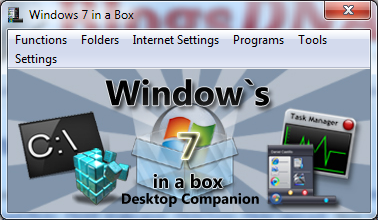Acer’s new 18.4-inch AS8940G-6865 is a desktop replacement. And by “desktop replacement” I mean that you could attach four legs to it and use it as your desk. It’s big, is what I’m trying to say. Don’t actually attach legs to it, but I guess take with you the impression that this is a large laptop. Also, it’s powerful, so keep that in mind as well.
The machine boasts a newfangled quad-core Intel Core i7 CPU 720QM at 1.6GHz, an 18.4-inch LCD at 1920×1080 resolution, 4GB of DDR3 memory, an NVIDIA GeForce GTS 250M GPU with 1GB of dedicated DDR3 video RAM, 500GB SATA hard drive, Blu-ray/DVD burner combo drive, 8-cell battery, and Windows 7 Home Premium 64-bit.
There’s also five USB ports, an HDMI port, eSATA port, card reader, webcam, VGA output, Dolby audio, draft-N wireless, “touch-capacitive media control interface,” and a travel weight of more than 10 pounds.
Pricing starts at $1350 – Newegg seems to be first out of the gate to sell the machine.
Full press release:
New Acer Aspire Notebook PC Maximizes Performance with New Intel Core i7 Quad-Core Processor and Windows 7 Technology
New Aspire AS8940G-6865 Notebook with 18.4-inch Display Delivers Intensive Gaming, Entertainment and Multimedia Performance
SAN JOSE, Calif.–(BUSINESS WIRE)–Acer America today introduced the Acer Aspire AS8940G-6865 notebook PC, featuring the new Intel® Core™ i7 Quad-Core 720QM processor and Windows® 7 Home Premium. This mobile processor delivers extremely fast performance for the most demanding applications such as playing games and editing digital photos and videos.
Designed for entertainment and multimedia enthusiasts, the Aspire AS8940G-6865 offers superior performance, innovative features and advanced technology for mobile users. This new notebook boasts a large 18.4-inch widescreen HD display for extraordinary visual quality, advanced NVIDIA graphics, Blu-ray technology, a high-quality audio system, a large hard drive and ample memory, making it a mobile powerhouse. The addition of Windows 7 to this new notebook provides users with a new level of performance, simplicity and ease of use.
The Aspire AS8940G with the Intel Core i7 processor delivers a breakthrough in PC performance, allowing users to multitask between applications quicker and enjoy faster performance overall. The new processor features Intel Turbo Boost Technology(3), which accelerates processor clock speed up to 75 percent to match a user’s workload(4) demands, giving more power when it is needed the most. Intel Hyper-Threading Technology(5) allows applications to work better in parallel, making multitasking quick and easy.
“This new Aspire notebook offers multimedia enthusiasts the ultimate in mobile entertainment – cinematic quality sound and visuals, an industry-leading feature set, and the performance to handle demanding digital media,” said Preeta Anil, Product Manager, Notebooks for Acer America. “The addition of Intel’s new Core i7 processor further boosts the power and performance of the Aspire AS8940G for games, movies, videos and more.”
Superior Technology for Mobile Cinema and Gaming
For the ultimate cinematic experience, the Aspire AS8940G-6865 features cutting-edge visual and sound technology. This new notebook includes an 18.4-inch full HD widescreen CineCrystal™ LED backlit display with a 1920×1080 resolution that exhibits true HDTV with a 16:9 aspect ratio in a new edge-to-edge design that’s perfect for widescreen movies. The certified Dolby Home Theater® Audio Enhancement technology combined with the Acer CineSurround sound system with five built-in speakers and the Acer Tuba CineBass booster bring clear tones and deep bass beats for incredible entertainment.
Users can enjoy the clarity and precision of Blu-ray Disc™ high definition technology for watching Blu-ray movies in extraordinary detail as well as burn CDs and DVDs of music, photos and files. The NVIDIA® GeForce® GTS 250M graphics maximize the gaming experience by providing intense computing power. Additionally, the 1GB of dedicated video memory allows buffering capacity for seamless graphics and visuals.
Further enhancing the multimedia experience, Acer’s Touch-Capacitive Media Control Interface allows consumers to quickly and easily control their entertainment choices, including media playback and volume levels. The Aspire AS8940G also comes equipped with a FineTip keyboard with backlight, making it more user friendly when watching movies or listening to music in a dark environment.
Mobile Performance and Connectivity
Additional popular technologies allow customers to stay connected and be productive while on the go. The integrated media card reader, DVD burner and 500GB of hard drive storage enable customers to quickly and easily view, download, store and share their digital media content. Additionally, the Aspire AS8940G offers users further flexibility and expandability with an extra eSATA hard drive port.
The Acer Crystal Eye™ webcam delivers smooth video streaming and high quality images for online chats and business video conferences, even in low-light situations. The built-in digital microphone conveys superior voice quality, keeping background noise levels low and minimizing echoes.
Consumers can connect via 802.11a/b/g Draft-N with expanded wireless features, and all models include Gigabit Ethernet for a fast wired connection.
Pricing/Configurations/Availability
The Acer Aspire AS8940G-6865 notebook will be available for U.S. customers at leading retailers this holiday season. A sample configuration follows.
Acer Aspire AS8940G-6865
Intel® Core™ i7 Processor 720QM (1.60GHz, 6MB L3 Cache, 1333MHz FSB)
18.4″ Full HD Widescreen CineCrystal™ LED-backlit Display
(1920×1080 Resolution, 16:9 Aspect Ratio)
4GB DDR3 Dual-Channel 1066MHz Memory
NVIDIA® GeForce® GTS 250M with 1GB dedicated DDR3 VRAM
500GB 5400RPM SATA Hard Drive (1)
4X Blu-ray Disc™/DVD SuperMulti Double-Layer Drive
Multi-in-1 Digital Media Card Reader
Intel® Wireless WiFi Link 5100 802.11a//bg/Draft-N Wi-Fi CERTIFIED®
Acer Crystal Eye™ Integrated Webcam
Touch-Capacitive Media Control Interface
5 USB 2.0 Ports, 1 HDMI Port, 1 eSATA Port
8-cell Li-Ion Battery (4800mAh)
Dolby Home Theater® Audio Enhancement
Acer CineSurround Sound System (5 built-in speakers)
Windows® 7 Home Premium 64-bit
MSRP $1,349.99








































